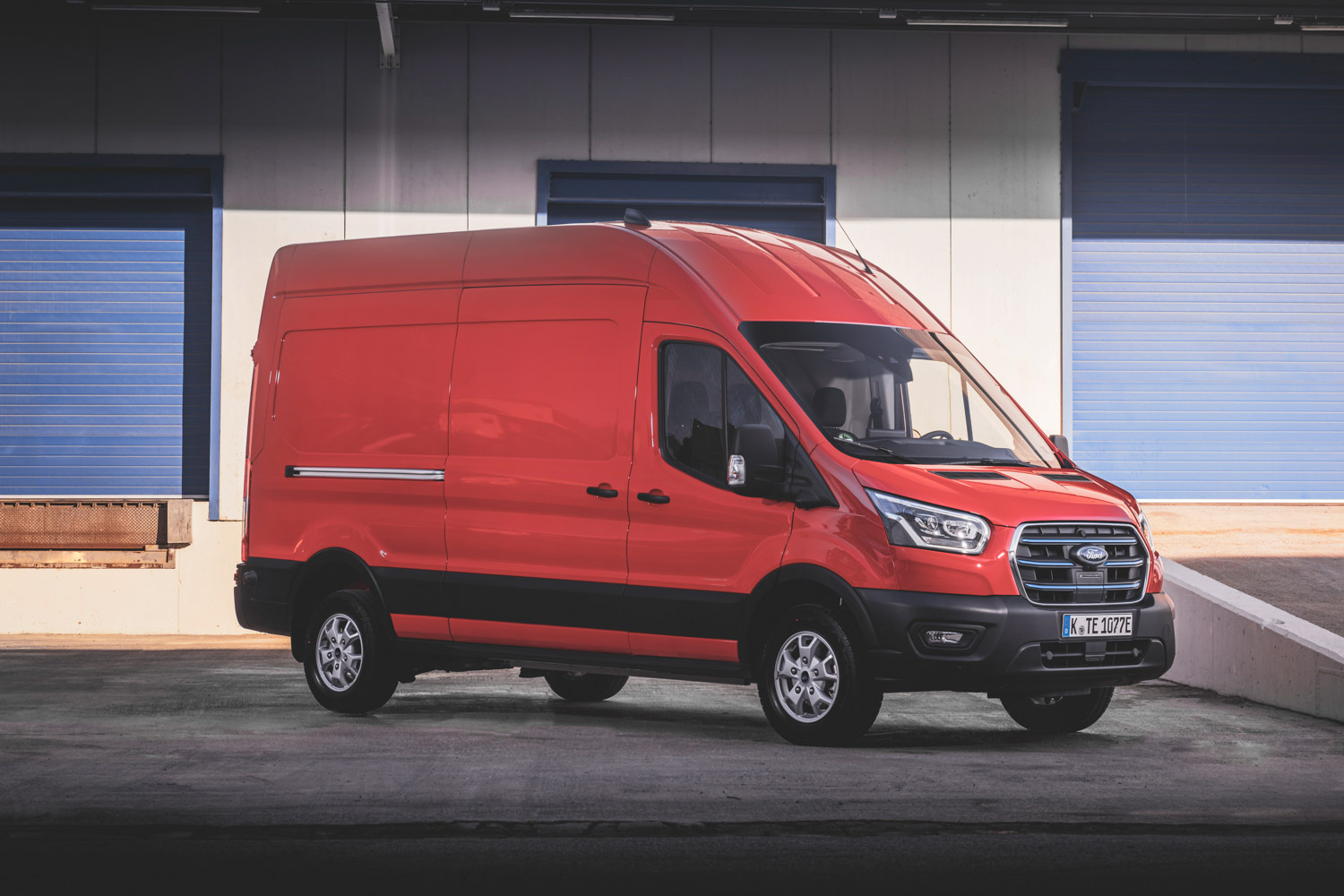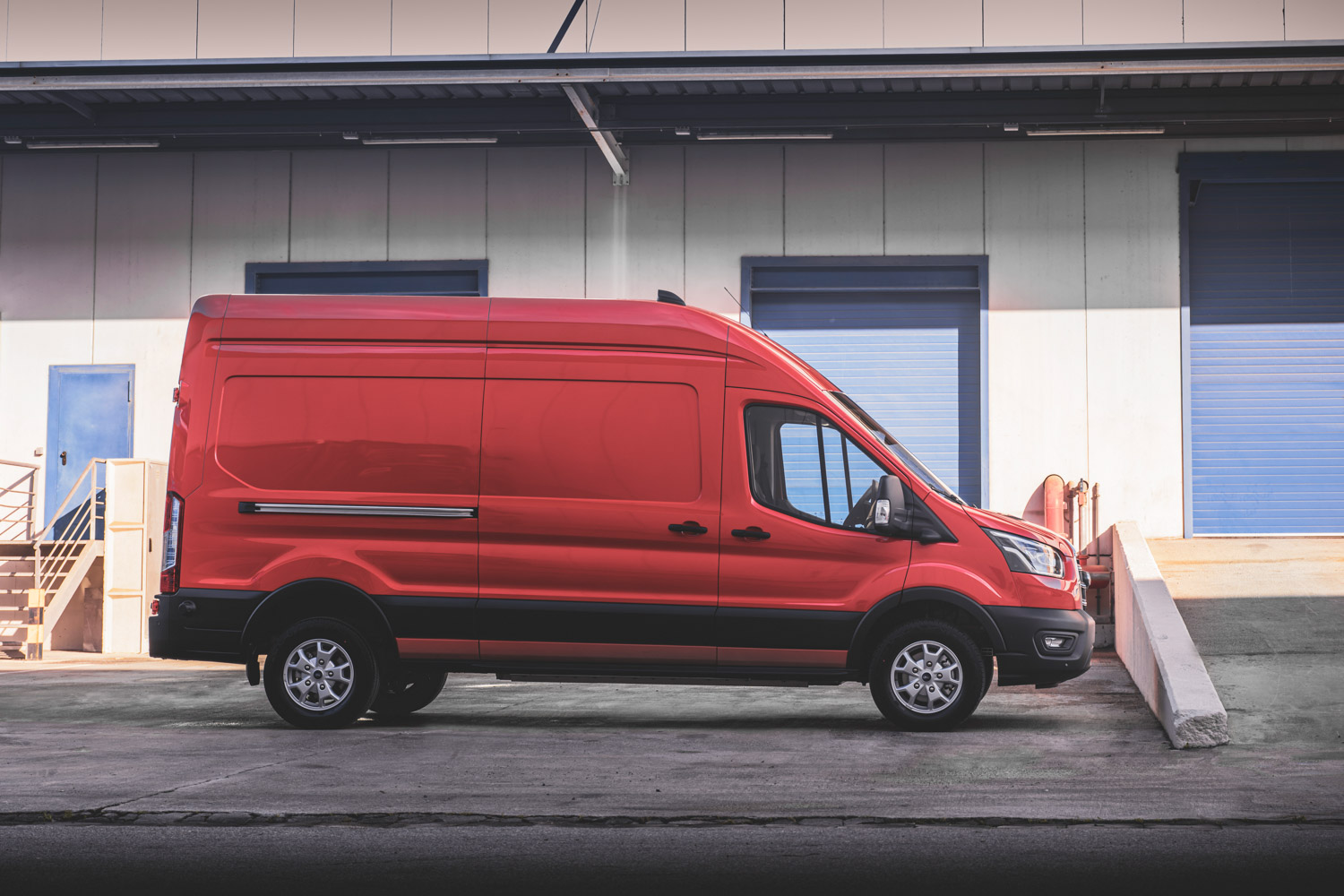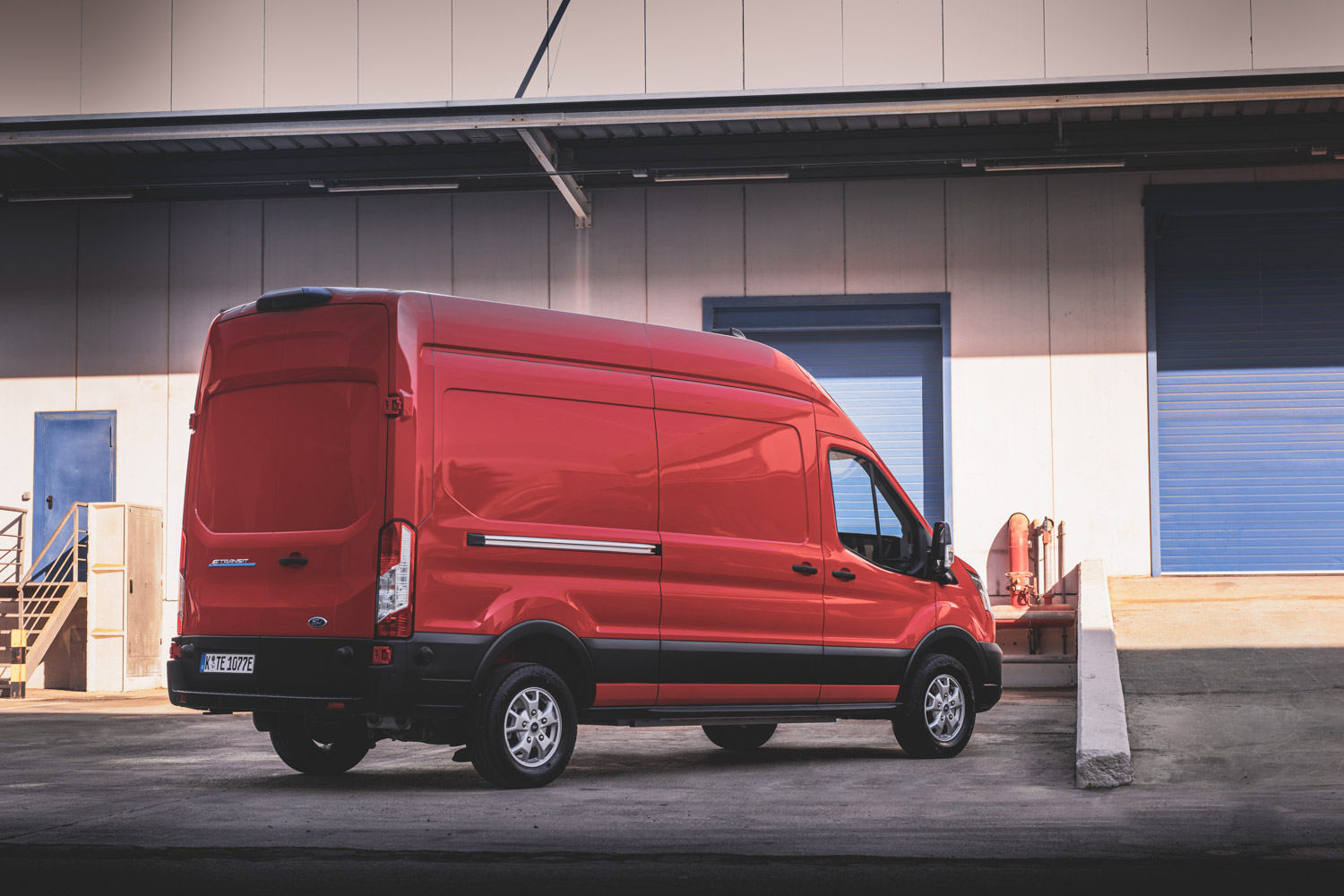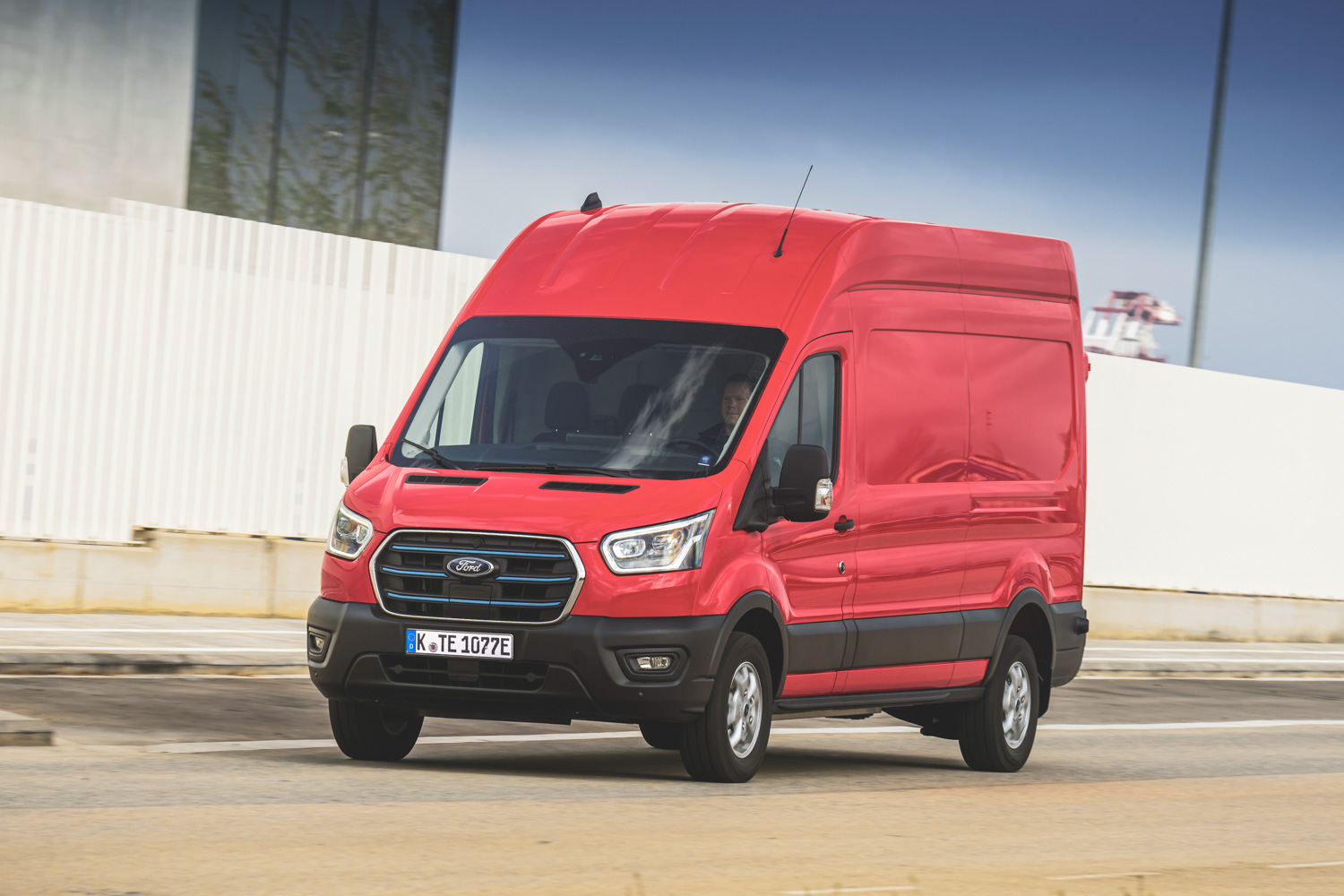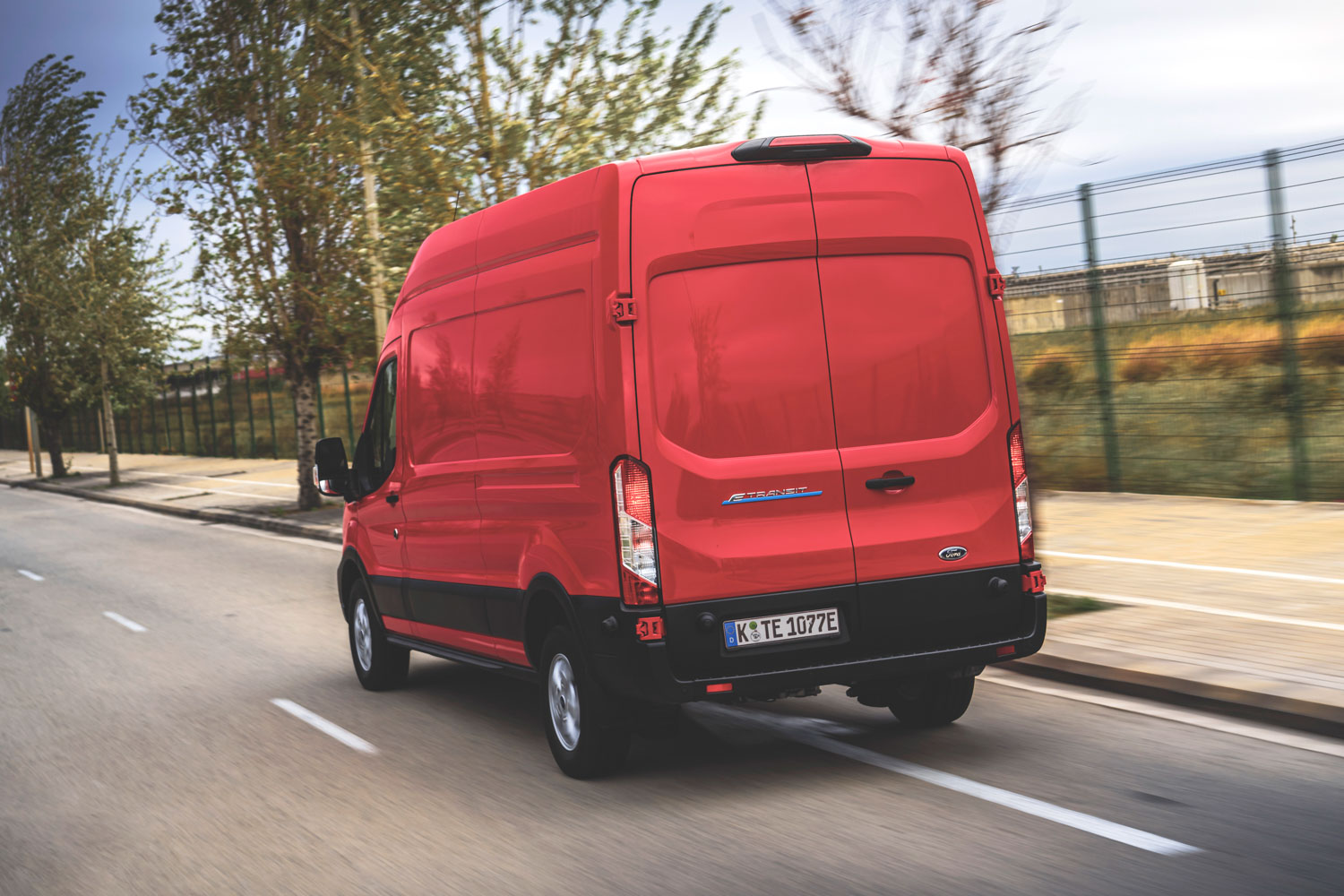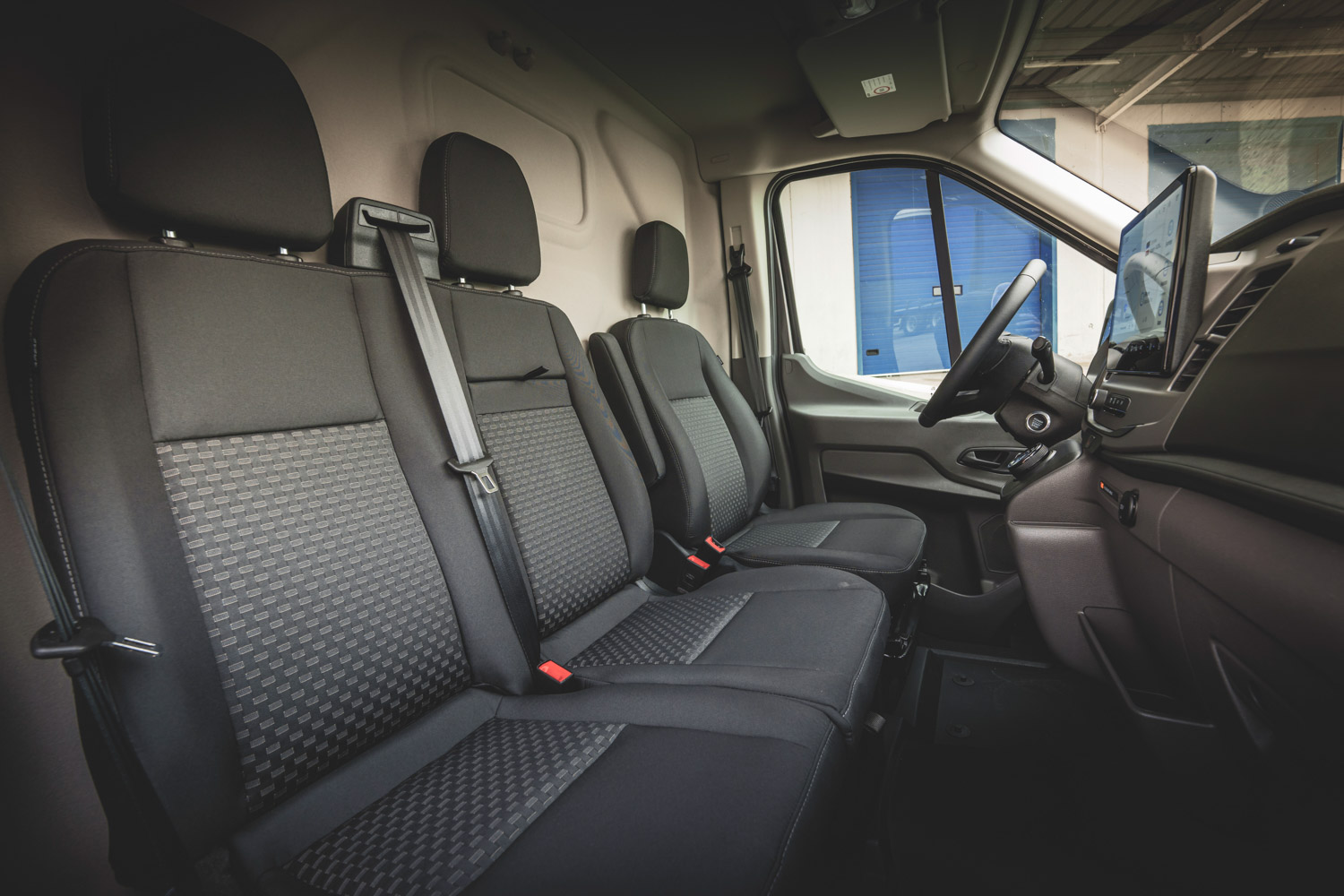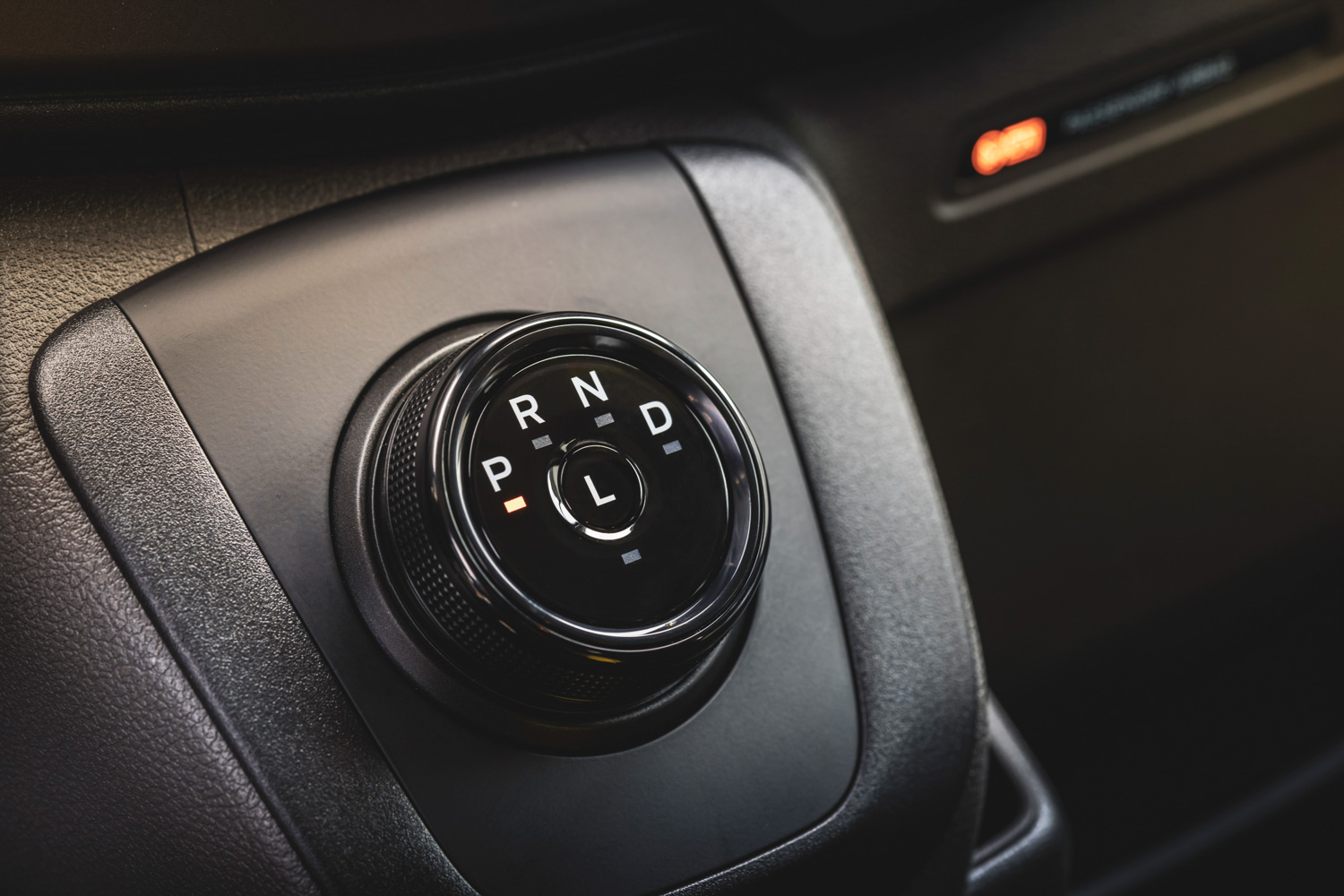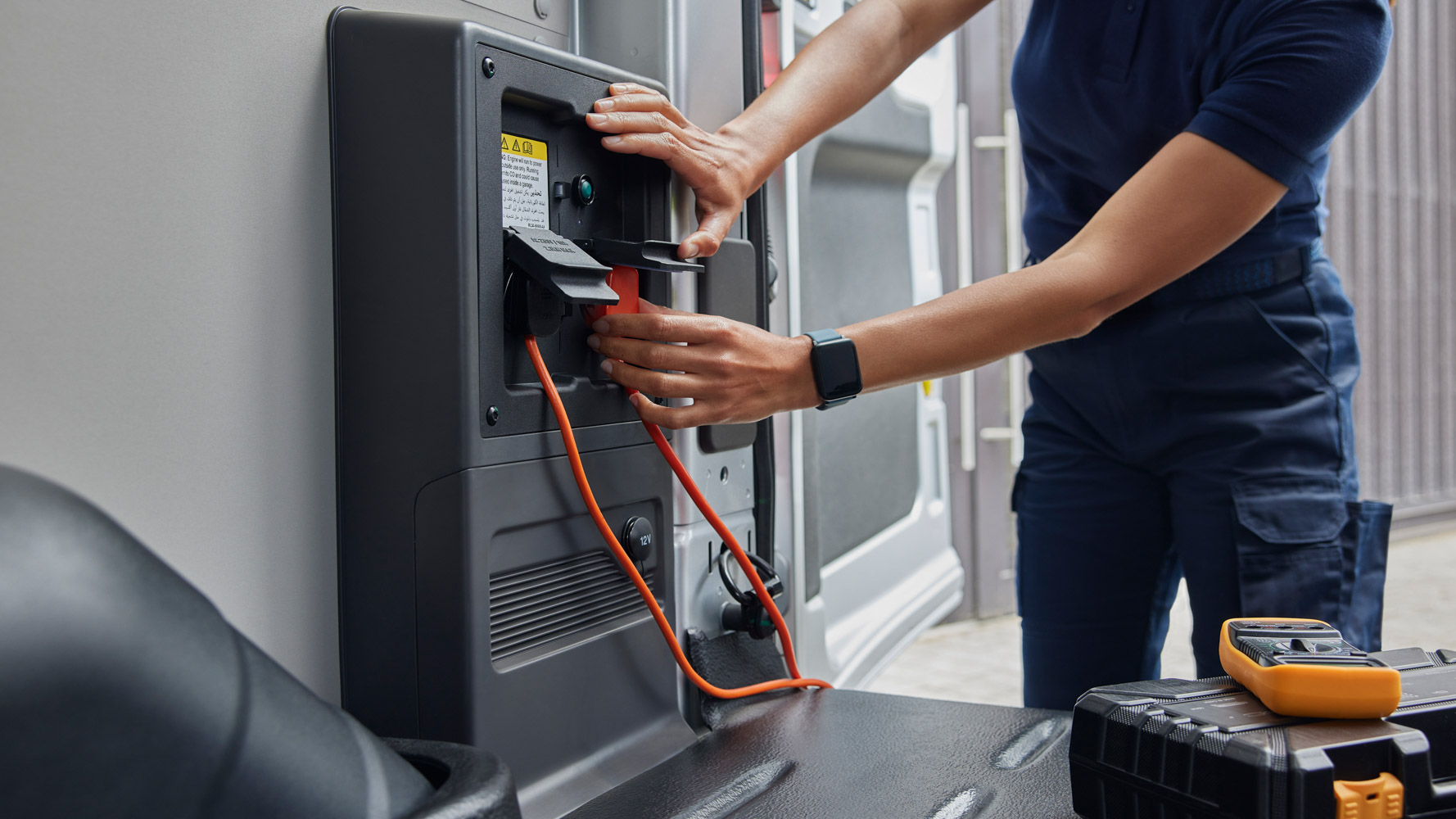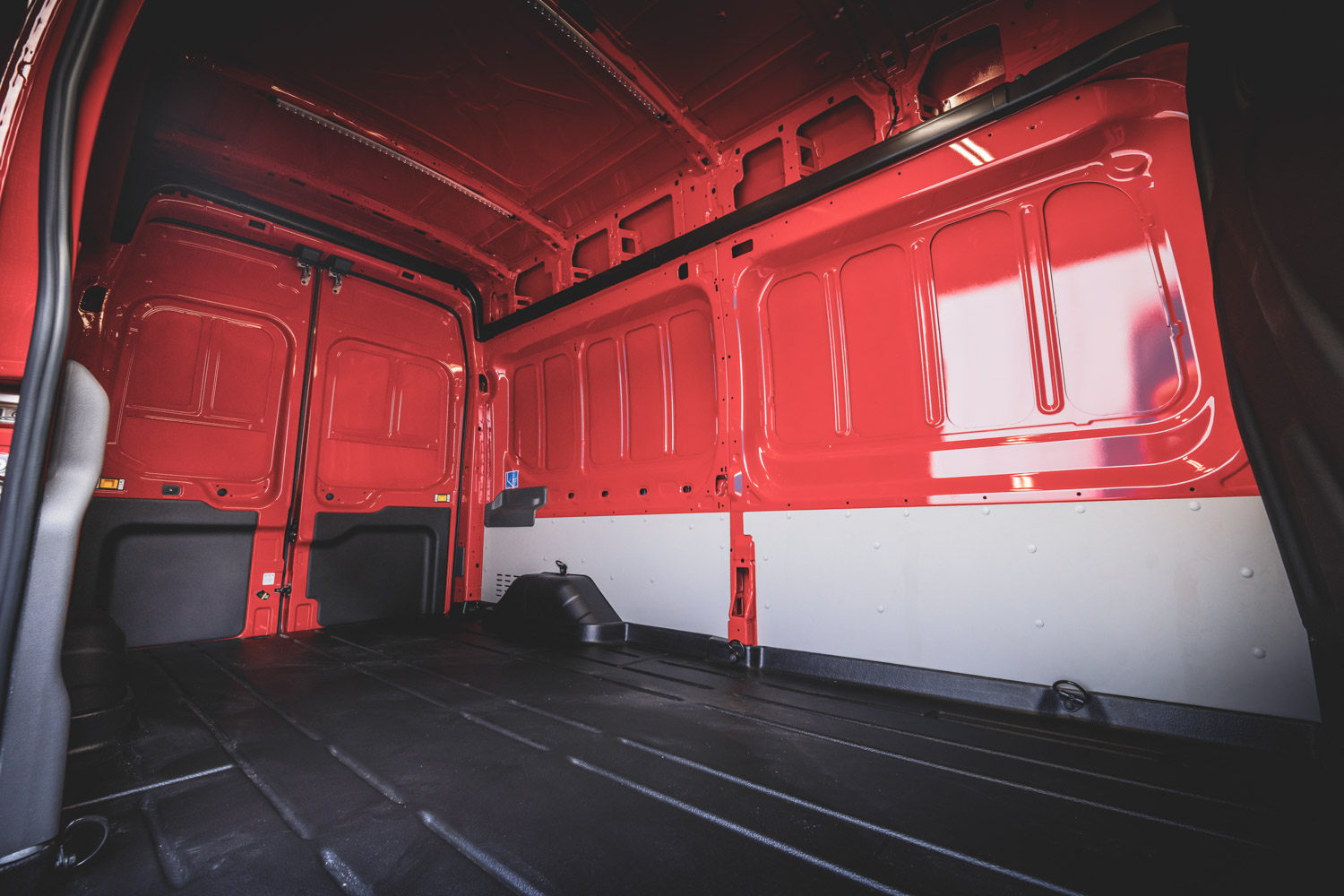The E-Transit is the first of Ford’s incoming range of electric vans with expectations that it will help transform the company into a new era of zero-emission electric vehicles. Taking the current generation van, Ford neatly integrates a battery into the chassis without impacting load space.
Ford E-Transit overview
Ford offers only one type of battery with the E-Transit, a 68kWh unit capable of a driving range of up to 317 kilometres in WLTP conditions. The range will vary depending on the body style, and the amount of load carried will also significantly impact the overall figure.
Buyers can choose between 135kW or 198kW power outputs depending on their needs. In each version, the motor sends power to the rear wheels via a single-speed automatic gearbox. Up to 25 variants are available, including chassis cab, panel van and crew cab styles with different lengths and roof heights.
Ford E-Transit range
The Ford E-Transit is available in Ireland in Leader and Trend specifications. Across the three lengths, two roof heights and both chassis cab and crew cab models, Ford offers a single battery that is 68kWh and capable of a driving range of up to 317 kilometres. While Ford expects most E-Transits to be charged overnight at depots or the user’s home, there is also a rapid DC charging option with a peak rate of 115kW. That can recharge the battery from 15 to 80 percent in 34 minutes.
Ford E-Transit interior
It may be an all-new powertrain, but the interior of the E-Transit is essentially the same as the regular diesel variants, and truth be told, it is a design that is beginning to show its age. The plastics are hard-wearing, and all feel solid inside, with various storage areas dotted around the interior and across the top of the dashboard. Further stowage is available overhead, although it’s mostly only suitable for paperwork or document folders.
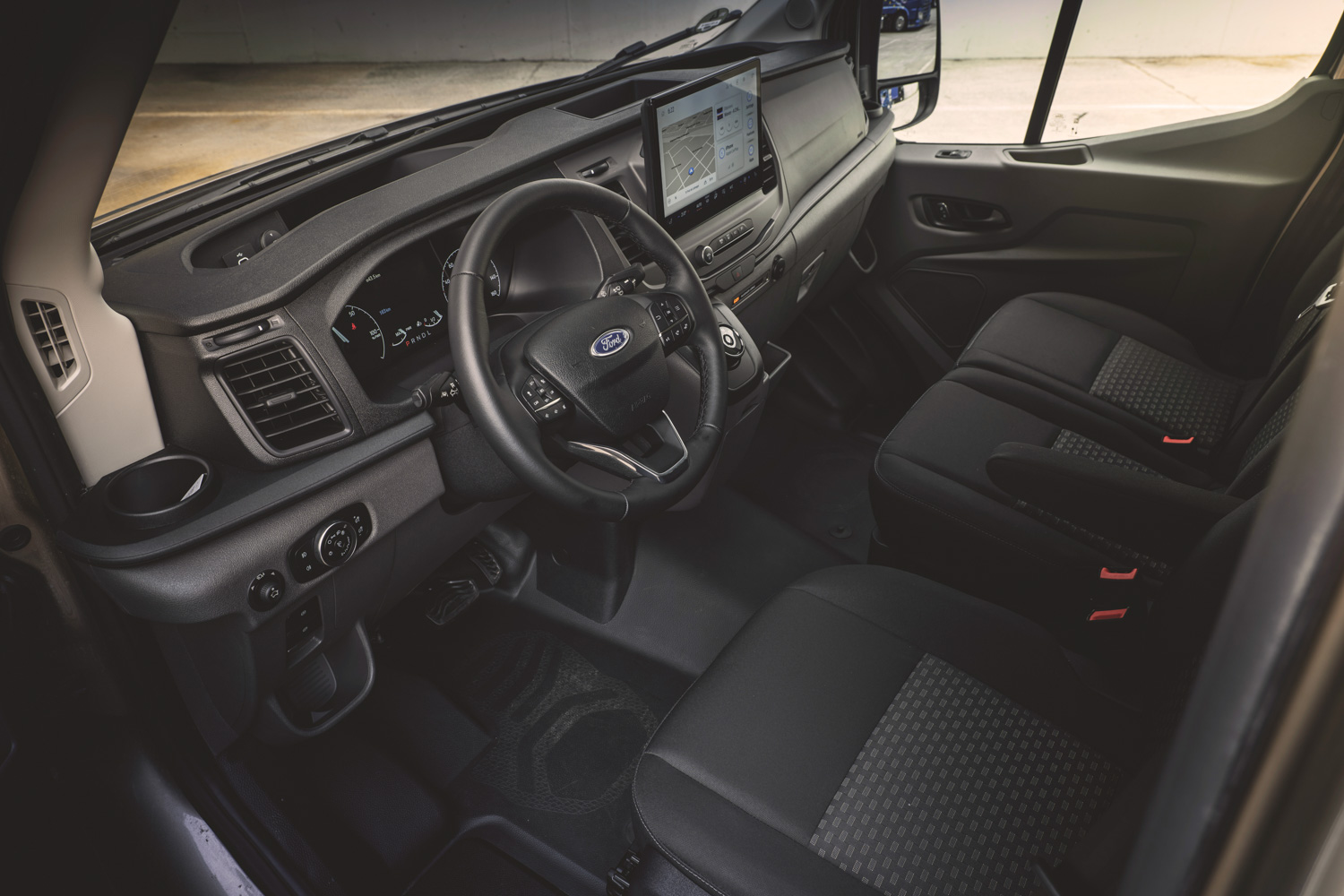
The instrument cluster remains a mostly analogue affair with a large dial on the left showing the amount of power being used and the speed shown on the right. Two smaller dials which would typically provide coolant temperature and fuel level now indicate the amount of power available and the battery charge level. In the latter case, a small TFT digital display provides more accurate driving data.
One of the more appealing features of the E-Transit’s interior is the standard fitment of a 12-inch touchscreen display. This wipe-clean, glare-resistant display runs the latest version of Ford’s infotainment system, SYNC4, which offers twice the computing power of the previous system plus seamless connectivity with smartphones. Several charging sources come in USB and 12-volt forms, though there isn’t a wireless charging option or any helpful place to put your phone, so you may still need to invest in a decent aftermarket cradle.
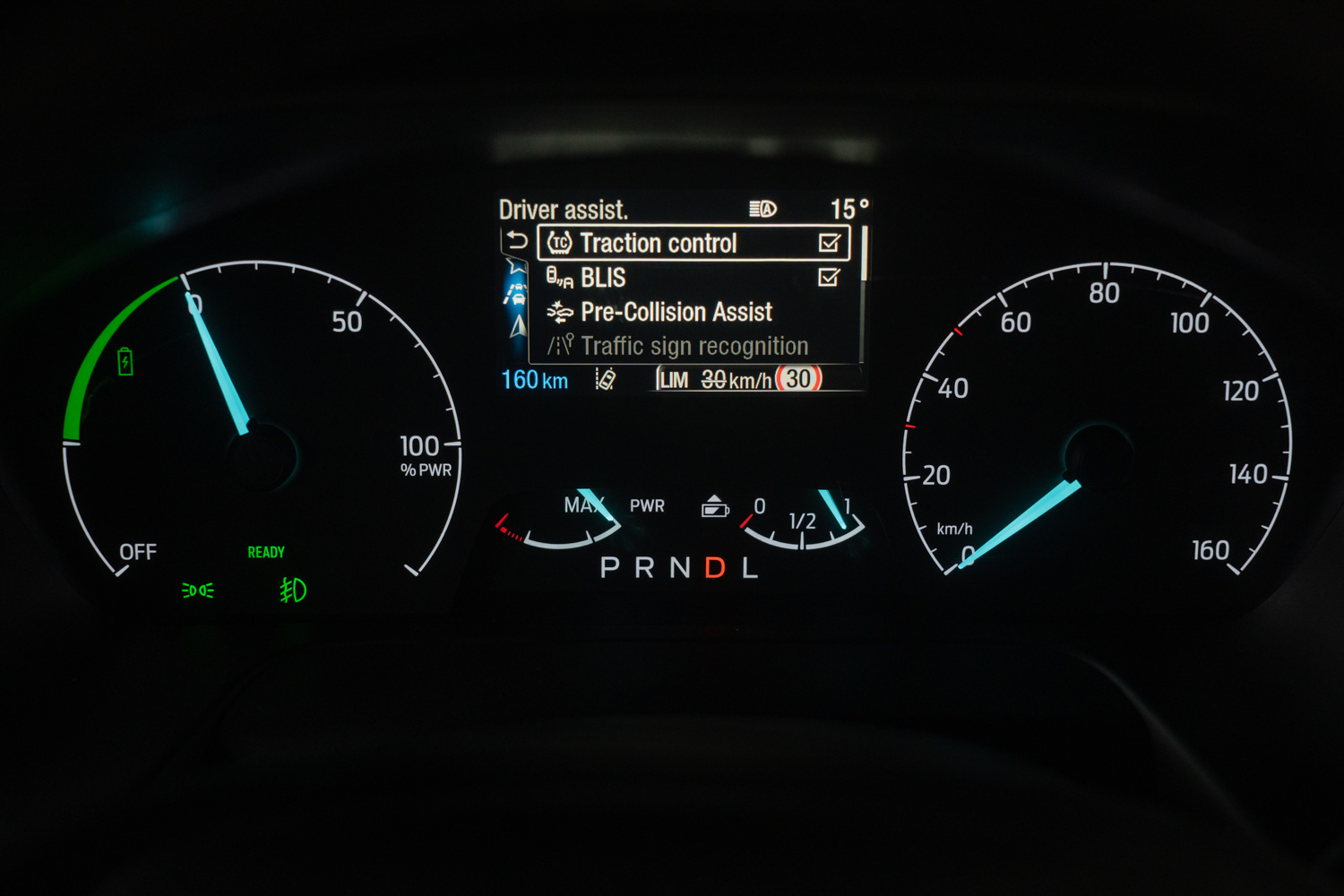
There’s a little more room around the driver as Ford uses a smaller rotary controller for the transmission instead of the more traditional selector lever it uses for the automatic diesel versions. The E-Transit also benefits from an electronic handbrake and keyless start as standard. Ford fits a moulded load floor liner, dual power heated door mirrors and keyless start as standard on the Trend specification.
One of the most useful features of the E-Transit is the availability of the Pro Power Onboard system. It harnesses energy from the battery to enable users to power external items such as power tools when on-site without the need for an external generator. It has a maximum output of 2.3kW and there is the function of setting a minimum reserve level in the battery to ensure that there’s enough to get you home at the end of the day.
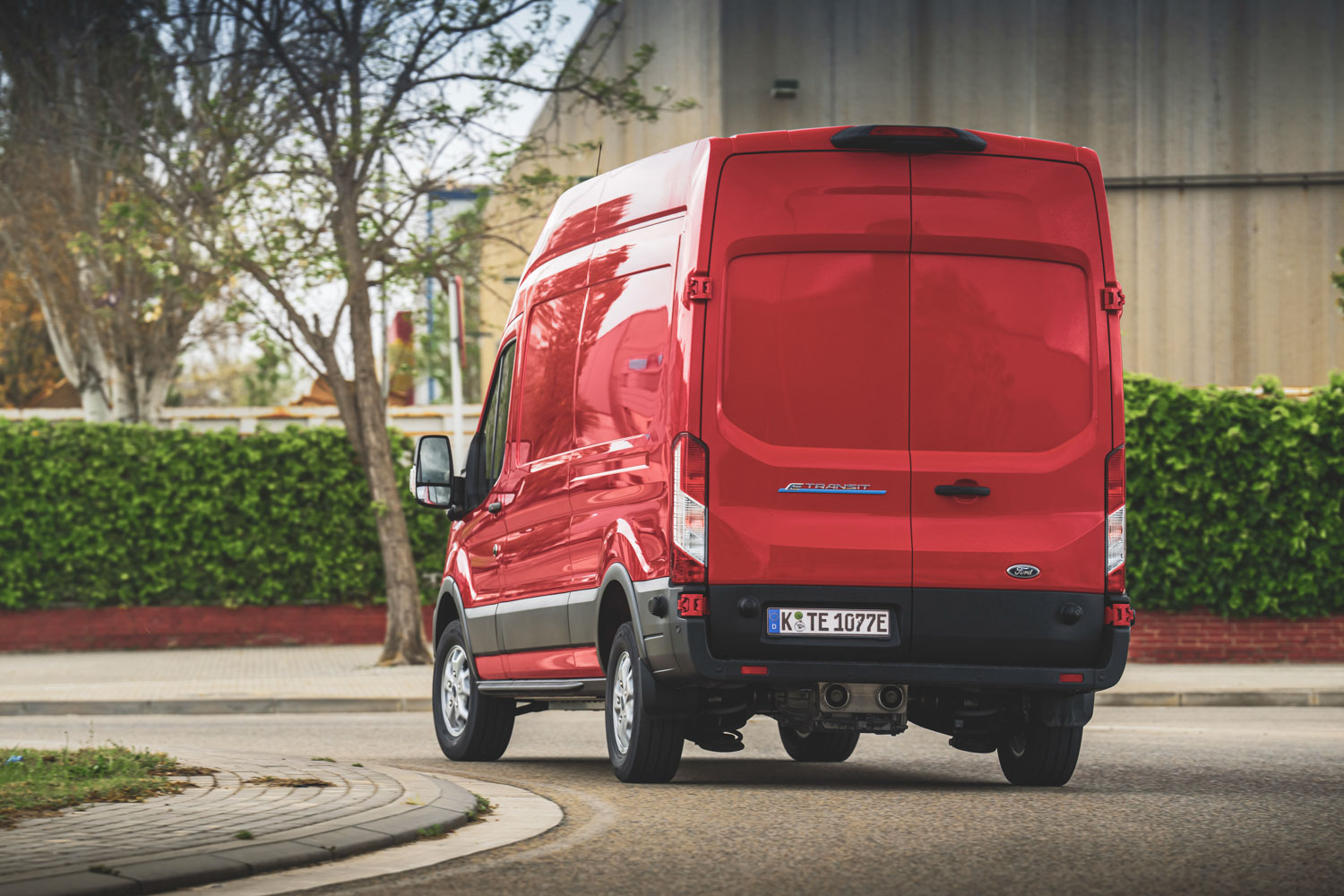
Ford E-Transit driving experience
Our first taste of the E-Transit came with the entry version, which has an electric motor with a 135kW (184hp) output. The smoothness at which the Ford deploys its electric power is rather impressive. Carrying a 400kg load in the rear, there is ample acceleration, with the Ford quickly getting up to 50km/h from a standing start. There is no discernible noise from the electric motor, and when stationary in traffic, only the green ‘Ready’ icon on the dashboard tells you that the van is on.
Driving in traffic is perhaps the one aspect many drivers will find that switching to electric brings the most enjoyment. Not only is there the benefit and ease of an automatic gearbox, but the complete lack of noise and vibration from the powertrain makes driving a little less strenuous. Different levels of regenerative braking are available, so drivers can opt to have the E-Transit coast when lifting their foot off the accelerator pedal or have the electric motor harvest some of that kinetic energy back into the battery.
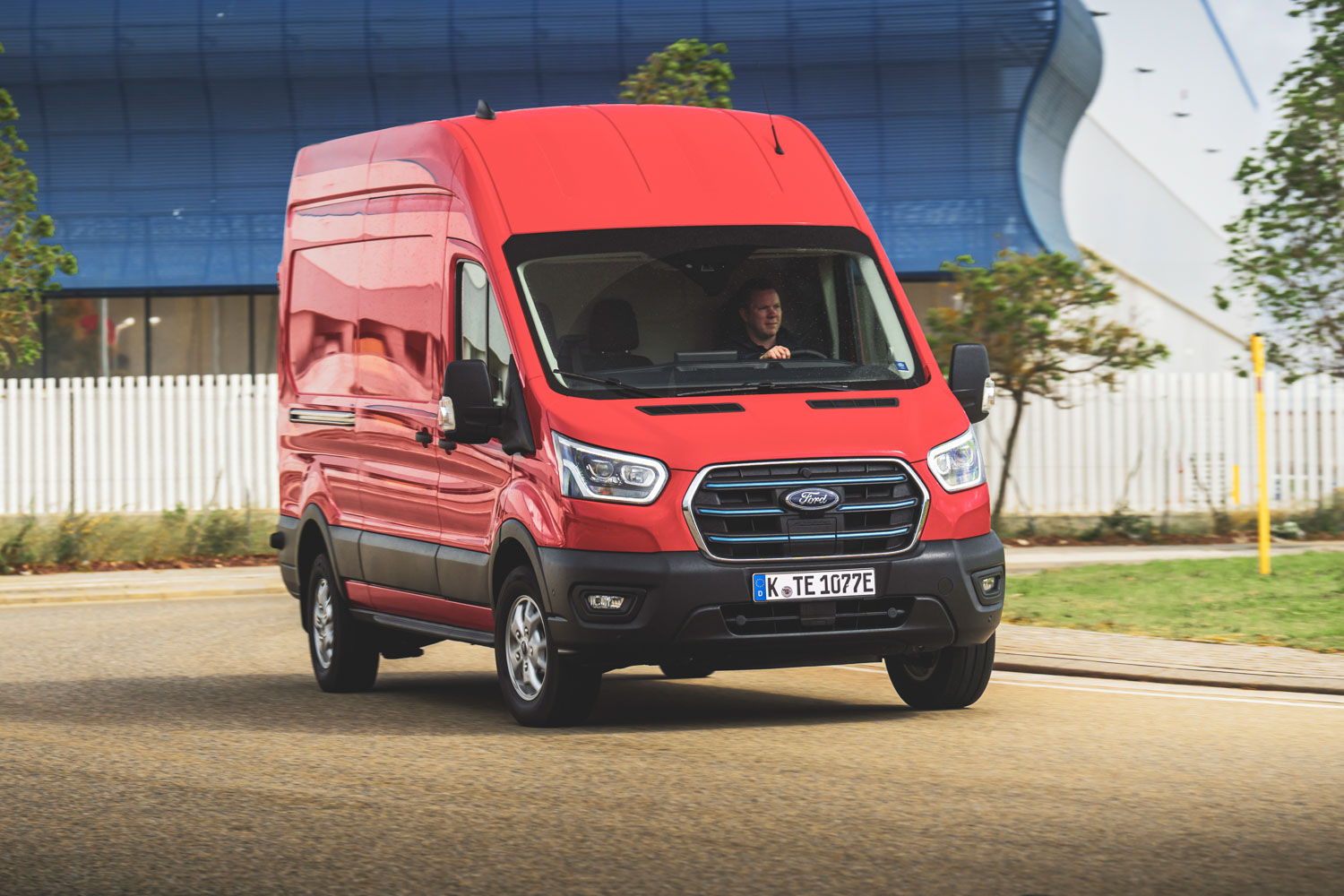
How far drivers can expect to drive on a single charge will make or break the E-Transit’s success. Ford knows this, so it has made a considerable effort to ensure it is as efficient as possible. Using the Ford Connected Navigation software can help drivers plan the best route. It considers numerous parameters, such as live traffic feeds, and can provide alternative routes to avoid congestion and reduce the impact on the van’s total driving range.
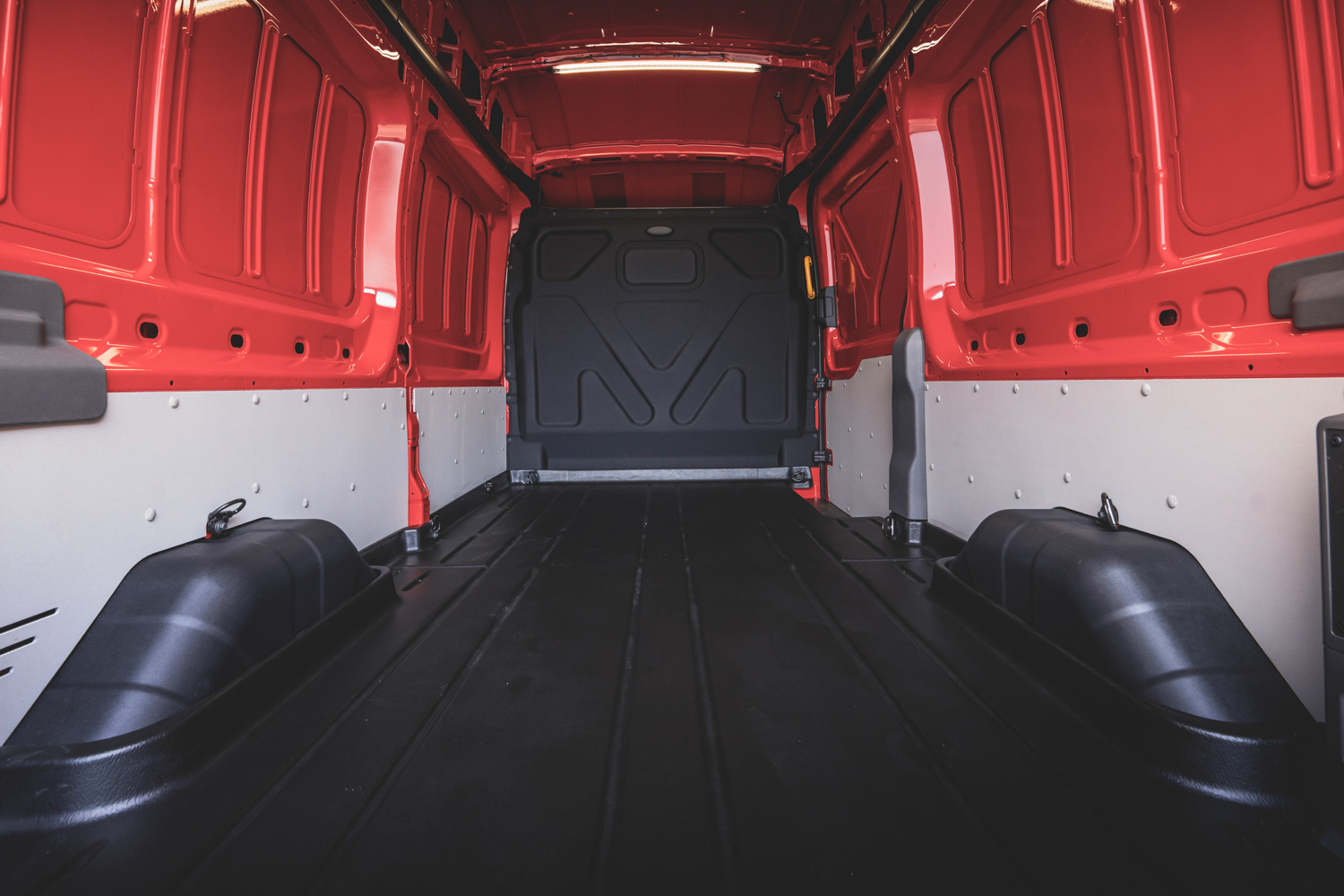
Alternatives to the Ford E-Transit
The Ford E-Transit arrives when numerous other van producers are shifting towards full electrification. Renault already has the Master that is now available with an improved 52kWh battery and a 200-kilometre driving range. Elsewhere in the market, Stellantis offers similar competitors with the Citroen e-Relay, Fiat E-Ducato and the Opel Movano-e, all of which use a 70kWh battery for a 224-kilometre range.


